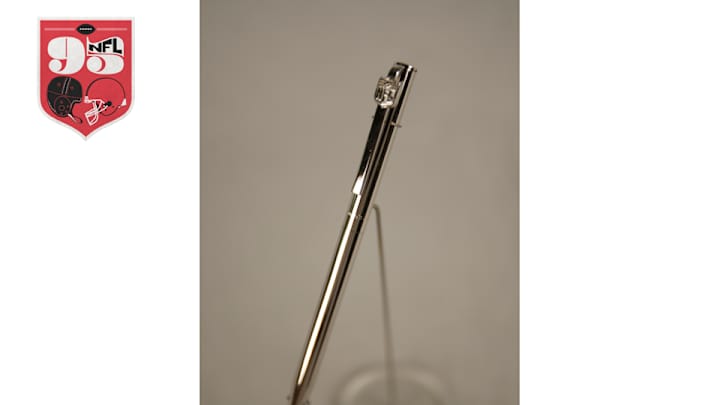The Pen That Ended the 2011 Lockout

The MMQB presents NFL 95, a special project—unveiled every Wednesday from May through July—detailing 95 artifacts that tell the story of the NFL, as the league prepares to enter its 95th season. See the entire series here.
For 136 days in 2011, there was no NFL. There were court dates, secret meetings and Pro Bowl quarterbacks working out at high school gyms. There were cantankerous negotiations between the league’s owners and the players association about revenue sharing, a potential 18-game season, a rookie wage scale and the salary cap. There were legitimate concerns that the 2011 regular season would be interrupted. And then there was a pen, gripped by commissioner Roger Goodell, that restored normalcy.
On July 25 the NFL announced the signing of a new 10-year collective bargaining agreement, ending the longest work stoppage in league history (topping the 57-day strike of 1982 and 24-day squabble of 1987). This CBA required teams to spend more to reach the salary cap and shrunk rookie contracts. Owners would receive 53 percent of the league’s annual revenue—it was $9 billion at the time—and players 47 percent, as opposed to the previous formula, which was roughly 50-50. Though money was certainly a focal point—the public groaned, categorizing the impasse as millionaires fighting billionaires—other clauses revealed a shift for the league. For example, an emphasis on player safety was addressed, with strict limitations on off-season workouts, as well as nearly $1 billion going towards improved benefits for retired players.
Nearly three years have passed, and the deal’s legacy is still unfolding, but one thing is certain: Everyone—owners, players and fans—breathed a sigh of relief when Goodell declared, “Football is back.” Four and a half months was a frighteningly long time without it.
— Emily Kaplan
